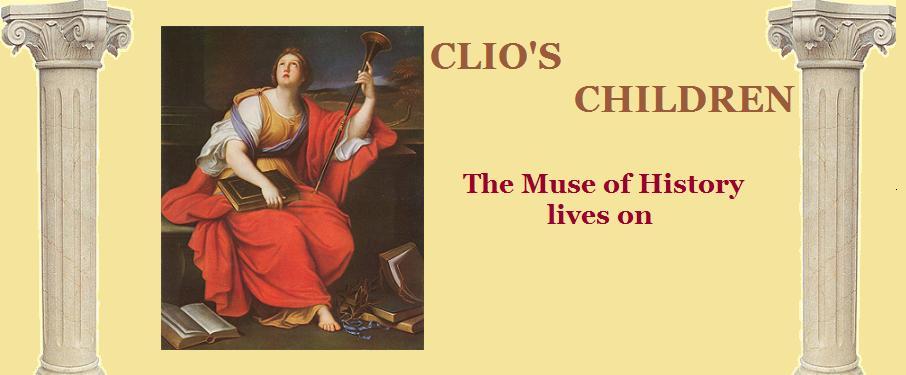 Reprinted from History and Women Blog.
Reprinted from History and Women Blog.Mary was married at St Martin-in-the-Fields, London, on 27 October 1633. In 1637 she supported Anne Hutchinson, who preached that God "spoke directly to individuals" rather than only through the clergy. She joined with her and became involved in what was called the "Antinomian heresy," where they organized groups of women and men to study the Bible in contravention of the theocratic law of the Massachusetts Bay Colony.
On October 17, 1637, after nearly four years of marriage, she gave birth to a deformed stillborn baby, whom she buried privately.
Because she had sided with Anne Hutchinson in the Antinomian heresy, she and her husband were banished. They moved to Providence, Rhode Island.
Shortly thereafter, the authorities learned of the “monstrous birth,” and Governor Winthrop had it exhumed in March 1638, before a large crowd. He described it thus:
“It was of ordinary bigness; it had a face, but no head, and the ears stood upon the shoulders and were like an ape’s; it had no forehead, but over the eyes four horns, hard and sharp; two of them were above one inch long, the other two shorter; the eyes standing out, and the mouth also; the nose hooked upward; all over the breast and back full of sharp pricks and scales, like a thornback [i.e., a skate or ray], the navel and all the belly, with the distinction of the sex, were where the back should be, and the back and hips before, where the belly should have been; behind, between the shoulders, it had two mouths, and in each of them a piece of red flesh sticking out; it had arms and legs as other children; but, instead of toes, it had on each foot three claws, like a young fowl, with sharp talons.”
Winthrop sent descriptions to numerous correspondents, and accounts were published in England in 1642 and 1644. The deformed birth was considered evidence of the heresies and errors of Antinomianism.
In 1652, they travelled to England, where Mary joined the Religious Society of Friends (Quakers) after hearing the preaching of its founder and feeling that it was in agreement with the ideas that she and Anne Hutchinson held years earlier. She eventually became a Quaker preacher in her own right.
Her husband returned to Rhode Island in 1652. Mary remained in England until 1657. The next year she travelled to Boston to protest the new law banning Quakers, and was arrested and expelled from the colony. Her husband, who had not become a Quaker, was not arrested.
Mary continued to travel in New England to preach Quakerism, and was arrested in 1658 in New Haven, Connecticut. After her release she returned to Massachusetts to visit two English Quakers who had been arrested. She was also arrested and then permanently banished from the colony.
From there, she traveled to Massachusetts a third time with a group of Quakers to publicly defy the law, and was again arrested, but this time, she was sentenced to death.
After a short trial, two other Quakers were hanged, but because her husband was a friend of the Governor, he secured a last-minute reprieve, against Mary's wishes, for she had refused to repent and disavow her Quaker faith.
Mary was forced to return to Rhode Island, then traveled to Long Island, New York to preach, but her conscience led her to return to Massachusetts in 1660 to defy the anti-Quaker law. Despite the pleas of her husband and family, she again refused to repent, and was again convicted and sentenced to death on May 31. The next day, she was hanged on Boston Common for the crime of being a Quaker in Massachusetts. She died a martyr.
Her execution is described by Edward Burrough in A Declaration of the Sad and Great Persecution and Martyrdom of the People of God, called Quakers, in New-England, for the Worshipping of God (1661).
Her last words before she died were: “Nay, I came to keep bloodguiltiness from you, desireing you to repeal the unrighteous and unjust law made against the innocent servants of the Lord. Nay, man, I am not now to repent. ”
After her death a member of the General Court uttered one of those bitter scoffs which prove the truest of all epitaphs, "She did hang as a flag for others to take example by."
A bronze statue of Mary, created by a Quaker sculptor, now stands in front of the Massachusetts state capitol in Boston; a copy stands in front of the Friends Center in downtown Philadelphia, and another in front of Stout Meetinghouse at Earlham College in Richmond, Indiana.

Mary Barrett Dyer
1611 – June 1, 1660
Visit History and Women for more historical women's biographies
1611 – June 1, 1660
Visit History and Women for more historical women's biographies





4 comments:
Wow, that's quite a story. Love it!
Fascinating! I am just reading a book that features a Winthrop. Not sure how it connects just yet, but it is a coincidence.
Very interesting. Never knew this before. Recently searching Family history on both fathers side and Mothers side. This come under Mothers side. WAY back.
Correct birthdate is 1610.
Post a Comment